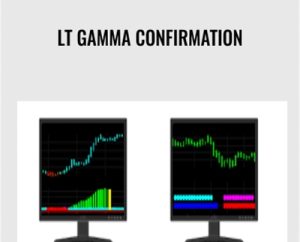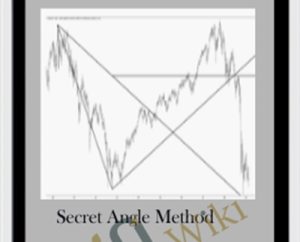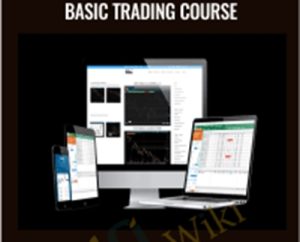Master Forex trading with the Master trading-forex-investing-haris-hayat/">Forex trading with the 2003 Master Class – Gerald Appel2003 Master Class – Gerald Appel course, available for just course, available for just Original price was: $647.00.Original price was: $647.00.$$65.0065.00Current price is: $65.00.Current price is: $65.00. on on GripForex.comGripForex.com! Specializing in financial markets, we offer premium downloadable Forex courses in ! Specializing in financial markets, we offer premium downloadable Forex courses in Forex and TradingForex and Trading. Learn strategies from experts, trade smarter, and save over 80%. Get a grip on your trading future!. Learn strategies from experts, trade smarter, and save over 80%. Get a grip on your trading future!
Salepage link: Salepage link: At HERE. Archive:
Master Class with Gerald Appel Master Class with Gerald Appel
at the January 2003 Caribbean Traders’ Campat the January 2003 Caribbean Traders’ Camp
Session 1
Market Indices and Chart FormationsMarket Indices and Chart Formations
- 1. NASDAQ Composite and Current Volatility1. NASDAQ Composite and Current Volatility
- 2. The Long Term Moving Average Channel of NASDAQ2. The Long Term Moving Average Channel of NASDAQ
- 3. MACD Patterns of the S & P 500 Threatening to Break Long Term Downtrend3. MACD Patterns of the S & P 500 Threatening to Break Long Term Downtrend
- 4. NASDAQ /NYSE Index Relative Strength Favors Nasdaq – Bullish4. NASDAQ /NYSE Index Relative Strength Favors Nasdaq – Bullish
- 5. Bullish and Bearish Chart Patterns 15. Bullish and Bearish Chart Patterns 1
- 6. Bullish and Bearish Chart Patterns 26. Bullish and Bearish Chart Patterns 2
- 7. Angle Changes7. Angle Changes
- 8. T-formations8. T-formations
- 9. NASDAQ Composite T-Formations9. NASDAQ Composite T-Formations
- 10. Andrew’s Pitchfork10. Andrew’s Pitchfork
Session 2
Moving Average Convergence-DivergenceMoving Average Convergence-Divergence
- 1. Illustration of MACD Concept1. Illustration of MACD Concept
- 2. Introducing the Signal Line2. Introducing the Signal Line
- 3. The Basic Buy and Sell Signal3. The Basic Buy and Sell Signal
- 4. Using Divergences to Recognize the Reliable Signals4. Using Divergences to Recognize the Reliable Signals
- 5. Further Examples of Divergences5. Further Examples of Divergences
- 6. Comparing MACD to a Price Momentum Oscillator6. Comparing MACD to a Price Momentum Oscillator
- 7. Comparison of MACD and RSI7. Comparison of MACD and RSI
- 8. Different MACD’s for Buy and Sell Signals8. Different MACD’s for Buy and Sell Signals
- 9. MACD during a Strong Market Uptrend9. MACD during a Strong Market Uptrend
- 10. MACD during a Strong Downtrend10. MACD during a Strong Downtrend
- 11. Treasury Bonds, MACD, and a Strong Uptrend11. Treasury Bonds, MACD, and a Strong Uptrend
- 12. The Stop-loss Signal for an Unsuccessful Trade12. The Stop-loss Signal for an Unsuccessful Trade
- 13. Using Trendlines to Confirm Buy and Sell Signals13. Using Trendlines to Confirm Buy and Sell Signals
- 14. Long-Term MACD Signals – The Start of a Bull Market14. Long-Term MACD Signals – The Start of a Bull Market
- 15. A Long Bull Market – Then the Crash15. A Long Bull Market – Then the Crash
- 16. Using Monthly MACD to Define Very Major Trends16. Using Monthly MACD to Define Very Major Trends
- 17. Using Time Cycles to Confirm MACD Signals17. Using Time Cycles to Confirm MACD Signals
- 18. Using Time Cycles – 2nd Example18. Using Time Cycles – 2nd Example
- 19. When MACD Does Not Provide Timely Signals19. When MACD Does Not Provide Timely Signals
- 20. Four Stages of MACD and the Market Cycle20. Four Stages of MACD and the Market Cycle
- 21. The 1998 Bottom21. The 1998 Bottom
- 22. A Bull and then a Bear Market22. A Bull and then a Bear Market
- 23. Catching the Lows – the 1984 bottom23. Catching the Lows – the 1984 bottom
- 24. A Second Example of Bottom Finding24. A Second Example of Bottom Finding
- 25. A Final Example of Bottom Finding25. A Final Example of Bottom Finding
- 26. Bear Market Rally, 2001 – 200226. Bear Market Rally, 2001 – 2002
Session 3
Riding the Market: Strategies to Stay on the Right Side of Market TrendsRiding the Market: Strategies to Stay on the Right Side of Market Trends
- 1. Summary1. Summary
- 2. Drawdown Illustrated2. Drawdown Illustrated
- 3. Some Risk-Adjusted Performance Measures (Higher = Better)3. Some Risk-Adjusted Performance Measures (Higher = Better)
- 4. “Normal” Risks for Various Investments (not worst cases)4. “Normal” Risks for Various Investments (not worst cases)
- 5. Basic Risk Control Strategies5. Basic Risk Control Strategies
- 6. Core Portfolio – Designed to Minimize 1–year Losses6. Core Portfolio – Designed to Minimize 1–year Losses
- 7. Four Parts of the Portfolio7. Four Parts of the Portfolio
- 8. Core Portfolio Performance History8. Core Portfolio Performance History
- 9. Minimum Risk Portfolio9. Minimum Risk Portfolio
- 10. Core Portfolio at Vanguard10. Core Portfolio at Vanguard
- 11. Core Portfolio with ETF’s11. Core Portfolio with ETF’s
- 12. Concept of Relative Strength12. Concept of Relative Strength
- 13. Example of Relative Strength Analysis: NYSE Composite Rises Faster when NASDAQ is Strong13. Example of Relative Strength Analysis: NYSE Composite Rises Faster when NASDAQ is Strong
- 14. Large Cap Value/Growth Model14. Large Cap Value/Growth Model
- 15. SVX Divided by SGX (monthly)15. SVX Divided by SGX (monthly)
- 16. Performance of SVX/SGX Model since 199416. Performance of SVX/SGX Model since 1994
- 17. Average Performance of Large Cap Value Mutual Funds vs. Large Cap Growth Mutual Funds since 196217. Average Performance of Large Cap Value Mutual Funds vs. Large Cap Growth Mutual Funds since 1962
- 18. Large Cap Value Divided by Large Cap Growth18. Large Cap Value Divided by Large Cap Growth
- 19. Large Cap versus Small Cap Model19. Large Cap versus Small Cap Model
- 20. S & P 500 Divided by S & P 600 (monthly)20. S & P 500 Divided by S & P 600 (monthly)
- 21. Performance of S & P 500/SML Model since 199521. Performance of S & P 500/SML Model since 1995
- 22. S & P 500 Index vs. Average Small Cap Mutual Funds since 197922. S & P 500 Index vs. Average Small Cap Mutual Funds since 1979
- 23. S & P 600/Cash Timing Model Rules23. S & P 600/Cash Timing Model Rules
- 24. S & P Small Cap/Cash Timing Model24. S & P Small Cap/Cash Timing Model
- 25. S & P 600/Cash Model Results25. S & P 600/Cash Model Results
- 26. Interest Rates and Stocks26. Interest Rates and Stocks
- 27. Stocks and Interest Rates27. Stocks and Interest Rates
- 28. Results: Rates and Stocks, 1962 – 200228. Results: Rates and Stocks, 1962 – 2002
- 29. Avoid Sales Loads29. Avoid Sales Loads
- 30. How is Your Fund Doing?30. How is Your Fund Doing?
- 31. Mutual Funds vs S & P 50031. Mutual Funds vs S & P 500
Session 4
Four PresentationsFour Presentations
A – Analyzing the Stock Market with Moving Average Trading BandsA – Analyzing the Stock Market with Moving Average Trading Bands
- 1. Basic Concept of Moving Average Trading Channel1. Basic Concept of Moving Average Trading Channel
- 3. Different Phases within the Moving Average Trading Channel (NASDAQ Composite, Daily)3. Different Phases within the Moving Average Trading Channel (NASDAQ Composite, Daily)
- 3. Different Phases within the Moving Average Trading Channel (NYSE Composite, monthly)3. Different Phases within the Moving Average Trading Channel (NYSE Composite, monthly)
- 4. Long-Term Weekly Chart –NYSE Index 21-Week Average, 6% bands4. Long-Term Weekly Chart –NYSE Index 21-Week Average, 6% bands
- 5. Moving Average Channels in a Flat Market Period – 1991-19925. Moving Average Channels in a Flat Market Period – 1991-1992
B – Volatility Peaks and Major Market BottomsB – Volatility Peaks and Major Market Bottoms
- 6. The NASDAQ Composite and Historical Volatility, 1970 – 19796. The NASDAQ Composite and Historical Volatility, 1970 – 1979
- 7. The NASDAQ Composite and Historical Volatility, 1980-`19897. The NASDAQ Composite and Historical Volatility, 1980-`1989
- 8. The NASDAQ Composite and Historical Volatility, 1990-19998. The NASDAQ Composite and Historical Volatility, 1990-1999
- 9. The NASDAQ Composite and Historical Volatility,2000-20029. The NASDAQ Composite and Historical Volatility,2000-2002
- 10. Peak Volatility, Subsequent Market Movement10. Peak Volatility, Subsequent Market Movement
C – The 4 Pillars of Investment Success – Long-Term Growth with Greater SafetyC – The 4 Pillars of Investment Success – Long-Term Growth with Greater Safety
- 11. Investment Strategies for Uncertain Times11. Investment Strategies for Uncertain Times
- 12. Why Safer Stock Funds Work Better12. Why Safer Stock Funds Work Better
- 13. Avg % Gain in Winning Months – Avg % Loss in Losing Months Based on Volatility Groups13. Avg % Gain in Winning Months – Avg % Loss in Losing Months Based on Volatility Groups
- 14. Gain Per Year, Based on Volatility Groups – 20 Years14. Gain Per Year, Based on Volatility Groups – 20 Years
- 15. Closed Drawdowns Based on Volatility Groups15. Closed Drawdowns Based on Volatility Groups
- 16. Fund Rotation Strategy – Performance by Performance Rank16. Fund Rotation Strategy – Performance by Performance Rank
D – The Power of NASDAQD – The Power of NASDAQ
- 17. NASDAQ Composite – NASDAQ/NYSE Minus 10 Week Moving Average, 1970-197317. NASDAQ Composite – NASDAQ/NYSE Minus 10 Week Moving Average, 1970-1973
- 18. NASDAQ Composite – NASDAQ/NYSE Minus 10 Week Moving Average, 1980-198418. NASDAQ Composite – NASDAQ/NYSE Minus 10 Week Moving Average, 1980-1984
- 19. NASDAQ Composite – NASDAQ/NYSE Minus 10 Week Moving Average, 1997-200219. NASDAQ Composite – NASDAQ/NYSE Minus 10 Week Moving Average, 1997-2002
- 20. NASDAQ Composite When NASDAQ is Dominant vs. NASDAQ buy and Hold – NYSE Composite When NASDAQ is Dominant vs. NASDAQ buy and Hold20. NASDAQ Composite When NASDAQ is Dominant vs. NASDAQ buy and Hold – NYSE Composite When NASDAQ is Dominant vs. NASDAQ buy and Hold
- 21. NASDAQ Relative Strength Summary21. NASDAQ Relative Strength Summary
- 22. Relative Strength with Intermediate Monetary Filter22. Relative Strength with Intermediate Monetary Filter
Strengthen your trading skills with the Strengthen your trading skills with the 2003 Master Class – Gerald Appel2003 Master Class – Gerald Appel course at course at GripForex.comGripForex.com! Gain lifetime access to expert-led Forex content, designed to enhance your market understanding and profitability.! Gain lifetime access to expert-led Forex content, designed to enhance your market understanding and profitability.
- Lifetime Access:Lifetime Access: Unlimited, permanent access to your Forex trading courses. Unlimited, permanent access to your Forex trading courses.
- Significant Savings:Significant Savings: Enjoy prices up to 80% lower than retail. Enjoy prices up to 80% lower than retail.
- Secure Transactions:Secure Transactions: Your financial details are protected during payment. Your financial details are protected during payment.
- Practical Trading Skills:Practical Trading Skills: Acquire actionable strategies for real-world Forex markets. Acquire actionable strategies for real-world Forex markets.
- Instant Access:Instant Access: Begin your trading education immediately after purchase. Begin your trading education immediately after purchase.
- Learn Anywhere:Learn Anywhere: Access your Forex courses on any device. Access your Forex courses on any device.
Take control of your trading with GripForex.com!Take control of your trading with GripForex.com!
Additional information
| Status | Available |
|---|---|
| Language | |
| Author |
Only logged in customers who have purchased this product may leave a review.











Reviews
There are no reviews yet.